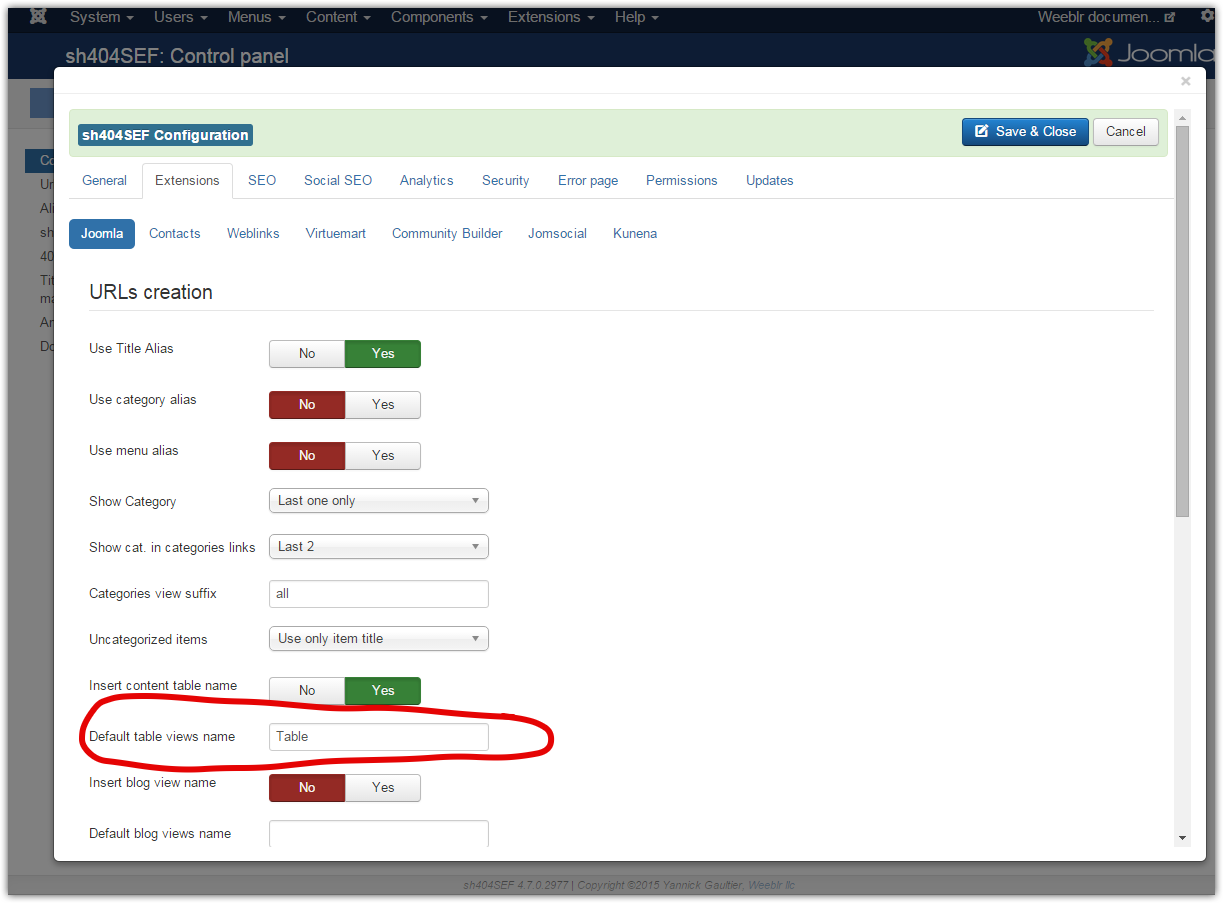Just clicked on no for table creation in extensions - Joomla - URL creation. Do I now need to purge URLS?
SH404 is creating lots of URLs with some strange titles I do not recognise. Can I delete these URLs in URL manager? If so do I need to use the purge button.
If I do use the purge button does this mean that Google will have to re-index the site?
In 404 request manager there are requests like 'index.php/component/mailto/' and '%22data:image/png;base64,iVBORw0KGgoAAAANSUhEUgAAA+gAAAHCCAYAAAB8C+OdAAAG50lEQVR4nO3BMQEAAADCoPVPbQwfoAAAAAAAAAAAAAAAAAAAAAAAAAAAAAAAAAAAAAAAAAAAAAAAAAAAAAAAAAAAAAAAAAAAAAAAAAAAAAAAAAAAAAAAAAAAAAAAAAAAAAAAAAAAAAAAAAAAAAAAAAAAAAAAAAAAAAAAAAAAAAAAAAAAAAAAAA'
I don't recognise these as content. How are these redirects being created and how do I know which pages to redirect them to?
Thanks
Ian
SH404 is creating lots of URLs with some strange titles I do not recognise. Can I delete these URLs in URL manager? If so do I need to use the purge button.
If I do use the purge button does this mean that Google will have to re-index the site?
In 404 request manager there are requests like 'index.php/component/mailto/' and '%22data:image/png;base64,iVBORw0KGgoAAAANSUhEUgAAA+gAAAHCCAYAAAB8C+OdAAAG50lEQVR4nO3BMQEAAADCoPVPbQwfoAAAAAAAAAAAAAAAAAAAAAAAAAAAAAAAAAAAAAAAAAAAAAAAAAAAAAAAAAAAAAAAAAAAAAAAAAAAAAAAAAAAAAAAAAAAAAAAAAAAAAAAAAAAAAAAAAAAAAAAAAAAAAAAAAAAAAAAAAAAAAAAAAAAAAAAAA'
I don't recognise these as content. How are these redirects being created and how do I know which pages to redirect them to?
Thanks
Ian
